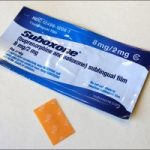What is Suboxone Recovery Really Like?
William S. Burroughs, famous author of Junky, describes the feelings opiates bring as “a spreading wave of relaxation slackening the muscles away from the bones so that you seem to float without outlines, like lying in warm salt water.” Once an addict becomes accustomed to this level of relaxation and euphoria, its seductive allure is hard to resist. In an effort to assist people in moving away from a life of opiate addiction, treatments are available to lessen the turmoil of quitting. Suboxone is one of those treatments.
Heroin, Morphine and Fentanyl
Heroin, Morphine and Fentanyl are some of the more commonly abused high-powered opiates out there today. Heroin abuse has been on the rise since 2010. These drugs are readily available in street form and have flooded the drug scene.
Opiates in Pill Form
Often, people are turning to illicit drugs like heroin after having become addicted to prescription painkillers like oxycodone and hydrocodone. An estimated 26 to 36 million people are supposed to have abused pain pills at one point or another in their lives. The medical community is working with government agencies to make access to these drugs more difficult to acquire for the masses.
How to Spot Addiction

Opiate addiction recovery is a lifelong journey.
So, how does one really know if the invisible line has been crossed from substance abuse to dependence? There are signs. Being aware and willing to look carefully and intrinsically is important. Watch for the following:
- Losing control
- Taking more than intended
- Thinking constantly about how to get more
- Keeping secrets surrounding drugs
- Family problems related to using chemicals
- Withdrawal symptoms when drugs are not available
- Change in health
- Continuing to use despite negative occurrences
Dangers of Abuse and Dependence
Opiate addiction is seriously dangerous. Overdose is one of the number one hazards of dependence and abuse. Because addicts develop a tolerance, the obsession to reach an optimal high pushes the user to take more and more. Eventually, the dose will be toxic.
I Can’t Be an Addict, Can I?
Anyone can teeter into opiate addiction. Well-meaning doctors may begin prescribing narcotics for pain relief. With continued use, tolerance is built, and patients who started taking medications prescribed for them gradually need more and more to secure relief.
Beating Opiates
Suboxone is a drug prescribed to help relieve the bondage of opiate addiction. While it works in much the same manner as harsh opiates like heroin, its effects are much less, and it helps the user kick the terrible withdrawal. Cravings are less debilitating, because Suboxone takes the edge off.
Fighting the Urge
Recovery from addiction takes time, commitment and help. Suboxone is merely a tool in the arsenal against opiate addiction. Because it is in the same class as other narcotics, it needs to be closely monitored by a team of professionals. However, as a beginning step, it can benefit addicts seeking long-term recovery.
Beginnings of Recovery
In the beginning stages of recovery, addicts are likely desperate to try any means to quell the beast of opiate addiction chomping at their heels. Suboxone is prescribed to help ease withdrawal symptoms. Patients are followed closely by physicians and are placed on a taper schedule lasting between three weeks and three months. Of course, this schedule varies widely depending upon the patient.
Day to Day Life
Initially, patients are monitored daily and have greater success starting out in and inpatient treatment center. Upon discharge, following up with strong aftercare support is helpful. Many find help and solace in recovery meetings, 12-step programs and holistic healthcare. Daily attention to opiate cessation is a must for someone attempting recovery.
Long-Term Recovery
Recovery from opiate addiction is generally a life-long journey. Opiates make lasting changes in the brain that can bring on drug cravings months and years after any opiate use. Staying cautious and connected for any signs of relapse is important for people seeking a better way of life free from the chains of opiate addiction.
To learn more about Suboxone treatment, or for help finding a facility that offers Suboxone, call 888-646-0865 (Who Answers?) .
Positive Health Effects of Suboxone: Going Beyond Addiction Treatment
Resources
Burroughs, W. (1953). Junky. Ace Books. New York, NY. Retrieved from: https://www.goodreads.com/work/quotes/24861-junky
Krisberg, K. (2014). Fatal heroin overdoses on the increase as use skyrockets: Health officials battling opiate epidemic. The Nation’s Health. 44(4). 1-10. Retrieved from: http://thenationshealth.aphapublications.org/content/44/4/1.1.full
Ling, W., Hillhouse, M., Domier, C., Doraimani, G., et al. (2009). Buprenorphine tapering schedule and illicit opioid use. Addiction. 104(2). 256-265. Retrieved from: http://www.ncbi.nlm.nih.gov/pmc/articles/PMC3150159/
SAMHSA (2016). Buprenorphine. Retrieved from: http://www.samhsa.gov/medication-assisted-treatment/treatment/buprenorphine
Volkow, N. (2014). America’s addiction to opioids: Heroin and prescription drug abuse. National Institute on Drug Abuse. Retrieved from: https://www.drugabuse.gov/about-nida/legislative-activities/testimony-to-congress/2016/americas-addiction-to-opioids-heroin-prescription-drug-abuse





